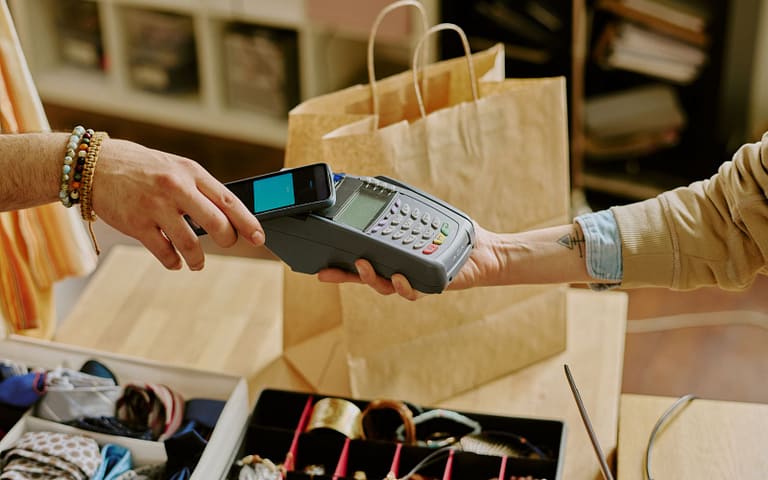Payment fraud has emerged as one of modern businesses’ most costly threats. With digital commerce expanding rapidly, companies must confront increasingly sophisticated schemes designed to exploit payment system weaknesses. This article delves into the current payment fraud landscape, examines financial consequences for businesses, explores detection technologies, and outlines practical protection strategies to safeguard your revenue.
The Real Cost of Payment Fraud
The financial toll of payment fraud continues to mount year after year. Recent market analysis reveals global payment fraud losses hit $32.39 billion in 2023, with experts forecasting this number will likely surpass $40 billion by 2027.

For businesses, these attacks create far-reaching problems beyond immediate monetary losses. Customer confidence plummets when fraud occurs, brand reputation suffers lasting damage, and operations face unexpected disruptions. Small to mid-sized companies bear particularly harsh consequences since they rarely possess the extensive security resources available to larger corporations.
| Payment Fraud Impact Category | Short-Term Effects | Long-Term Consequences |
| Financial | Direct revenue loss, chargeback fees, refund expenses | Increased security costs, higher processing fees, insurance premium increases |
| Operational | Staff time diverted to fraud investigation, payment processing delays | Resource reallocation from growth activities to fraud prevention, process restructuring |
| Reputational | Negative customer reviews, social media backlash | Diminished brand value, customer acquisition challenges, market share decline |
| Regulatory | Compliance investigations, potential fines | Stricter oversight requirements, mandatory security upgrades |
Payment Fraud Varieties: Know Your Enemy
Payment fraud manifests through numerous schemes, each requiring specific defensive approaches. Success in combating these threats starts with recognizing their distinct characteristics and warning signs.
| Fraud Type | Description | Warning Signals |
| Card-Not-Present (CNP) Fraud | Unauthorized card data use without physical card | Multiple declined transactions, unusual purchase timing, shipping/billing address mismatches |
| Account Takeover | Criminal access to legitimate customer accounts | Account detail changes, logins from unfamiliar locations, unusual transaction patterns |
| Friendly Fraud (Chargeback Fraud) | Valid customers dispute legitimate charges | Above-average chargeback rates, disputes on confirmed deliveries |
| Identity Theft | Purchases made with stolen personal information | Multiple accounts sharing data elements, rapid account creation followed by large purchases |
| Synthetic Identity Fraud | Fictitious identities created from combined real/fake information | Information inconsistencies, limited credit history paired with large purchase attempts |
| Refund Fraud | Abuse of return policies for unwarranted refunds | Frequent refund requests, buy-return patterns focusing on high-value merchandise |
Different fraud types demand tailored detection methods. CNP fraud detection typically relies on velocity checks and address verification, while account takeover prevention requires behavioral analysis and multi-factor authentication systems.
Financial Consequences of Payment Fraud
Payment fraud damages extend far beyond the face value of fraudulent transactions. Companies must manage several cost categories that collectively harm profitability and operational efficiency.
| Cost Category | Financial Reality | Industry Average |
| Transaction Loss | Direct monetary value stolen | 3.6× the transaction amount |
| Processor Penalties | Fees imposed for disputed transactions | $20-$100 per chargeback |
| Investigation Expense | Resources allocated to fraud resolution | 2.2× the transaction amount |
| Customer Replacement Cost | Expense to acquire new customers | 5-7× more expensive than retention |
| Reputation Damage | Trust erosion and loyalty decline | 54% of fraud victims switch providers |
The burden falls hardest on smaller enterprises. Industry research shows companies with yearly revenue under $5 million typically lose about 5% to payment fraud annually – a substantially higher percentage than their larger counterparts face.
Modern Payment Fraud Detection Technologies
Today’s payment fraud detection systems use sophisticated technologies that monitor transaction patterns and flag suspicious activities in real-time. These platforms employ various technical approaches to separate legitimate purchases from fraudulent attempts.
| Technology | Core Function | Business Advantages |
| Machine Learning Systems | Pattern analysis for anomaly identification | Adapts to new fraud techniques, reduces false alerts |
| Behavioral Monitoring | User activity tracking to spot suspicious behavior | Catches account compromises, maintains customer experience |
| Device Recognition | Device attribute tracking for user verification | Identifies suspicious hardware, helps detect cross-device fraud |
| Biometric Verification | Physical characteristic verification | Reduces account theft, strengthens security layers |
| Relationship Mapping | Connection analysis between transactions/entities | Reveals coordinated fraud attempts, prevents large-scale attacks |
Implementing these technologies requires careful balance. While strong security measures remain essential, excessive friction during checkout leads to abandoned carts and lost revenue. The best payment fraud detection platforms achieve this balance through risk-based authentication, applying stricter verification only when transaction characteristics warrant closer scrutiny.
| Friction Point | Customer Impact | Risk Management Approach |
| Additional Authentication Steps | Increased checkout time, potential abandonment | Apply selectively based on risk scoring |
| Manual Review Holds | Delayed order fulfillment, customer anxiety | Reserve for highest-risk transactions only |
| Purchase Limits | Restricted transaction size, multiple payment requirements | Tailor limits to customer history and risk profile |
| Information Requirements | Data entry burden, privacy concerns | Request minimum necessary information based on risk assessment |
| Payment Method Restrictions | Limited payment options, potential usability issues | Apply restrictions based on fraud patterns rather than blanket rules |

Practical Payment Fraud Prevention Tactics
Effective payment fraud prevention demands a layered approach addressing weaknesses throughout the payment ecosystem. Companies should consider implementing these proven defensive measures:
- Strong Authentication Implementation Multi-factor verification significantly reduces unauthorized access risk. By requiring additional verification beyond passwords, businesses prevent many account takeover attempts. PCI DSS compliance establishes minimum authentication standards for payment systems.
- Address Verification Services (AVS) Deployment AVS systems compare provided billing addresses against card issuer records. Discrepancies raise red flags, triggering additional verification requirements before transaction approval.
- 3D Secure 2.0 Adoption This security protocol adds verification layers for online purchases by connecting cardholders directly with their issuing banks. Modern versions balance protection with user experience through smart authentication rules.
- Transaction Pattern Monitoring These systems identify unusual activity patterns, such as multiple rapid purchases or repeated payment method attempts – behaviors commonly associated with fraudulent activity.
- Real-time Payment Fraud Analytics Utilization Advanced analytics tools continuously monitor purchases, applying machine learning to spot suspicious patterns potentially indicating fraud attempts.
- Comprehensive Transaction Record Maintenance Detailed electronic invoice documentation and transaction histories provide crucial evidence for dispute resolution while helping identify fraud patterns.
- Clear Refund Policy Establishment Well-defined return procedures help prevent refund fraud while maintaining customer satisfaction. Policies must balance service quality with fraud prevention measures.
| Prevention Strategy | Implementation Complexity | Fraud Reduction Potential | Customer Experience Impact |
| Multi-Factor Authentication | Medium | High | Medium-High (if selective) |
| Address Verification | Low | Medium | Low |
| 3D Secure 2.0 | Medium | High | Low-Medium |
| Velocity Checks | Low | Medium | Low |
| Real-time Analytics | High | Very High | Low |
| Transaction Records | Medium | Medium | None |
| Clear Refund Policies | Low | Medium | Positive |
Payment Fraud Analytics: Data-Driven Protection
Payment fraud analytics has become an essential component in modern fraud management strategies. These advanced systems analyze vast transaction datasets to identify patterns and anomalies potentially signaling fraudulent activity.
| Analytics Approach | Practical Application | Key Advantages |
| Predictive Modeling | Forecasts fraud likelihood based on historical patterns | Proactive prevention, fewer false positives |
| Behavior Analysis | Spots deviations from normal user actions | Early account takeover detection, smoother customer experience |
| Network Analytics | Maps connections between transactions and parties | Uncovers fraud networks, prevents coordinated schemes |
| Pattern Detection | Identifies transactions deviating from established norms | Catches new fraud techniques, minimizes financial damage |
| Relationship Analysis | Links related suspicious activities across accounts | Exposes sophisticated schemes, improves investigation efficiency |
The effectiveness of payment fraud analytics depends largely on data quality and completeness. Businesses must ensure their systems capture key transaction attributes including:
- Device details and fingerprints
- IP address and geographic location
- Transaction timing and frequency patterns
- Customer behavior patterns and history
- Historical transaction records and outcomes

By combining these data points, analytics platforms create detailed risk assessments for each transaction, enabling more accurate fraud detection while reducing false alarms that frustrate legitimate customers.
| Data Element | Fraud Indication Value | Collection Challenge |
| Device Fingerprint | Very High | Medium (requires JavaScript) |
| IP Geolocation | High | Low |
| Transaction Timing | Medium | Low |
| Customer Behavior | Very High | High (requires historical data) |
| Transaction History | High | Medium (storage requirements) |
Online Payment Fraud Detection: E-Commerce Considerations
E-commerce businesses face unique payment fraud challenges. The absence of physical cards and face-to-face verification creates additional vulnerabilities that criminals frequently target.
Effective online payment fraud detection requires specialized strategies designed for digital environments:
- Device Fingerprinting Technology This approach collects device-specific information during transactions, creating unique identifiers that help spot suspicious activities even when other credentials appear legitimate.
- IP Address Analysis Systems Tracking IP addresses reveals suspicious patterns, such as transactions from high-risk locations or attempts to hide true location through proxy services.
- Behavioral Analysis Methods Monitoring user behavior throughout the shopping experience identifies anomalies potentially indicating fraud, including unusual navigation, excessive page refreshes, or atypical input patterns.
- Frictionless Verification Processes Modern online payment fraud detection systems use risk-based authentication, applying stricter verification selectively to maintain smooth experiences for legitimate customers.
- Cross-channel Fraud Monitoring Platforms As businesses adopt omni-channel approaches, integrating fraud detection across all customer touchpoints becomes crucial for comprehensive protection.
| E-Commerce Fraud Type | Detection Method | Prevention Strategy |
| Card Testing Fraud | Velocity monitoring, minimum purchase requirements | CAPTCHA implementation, purchase limits |
| Account Creation Fraud | Email verification, device fingerprinting | Progressive information requirements, verification steps |
| Promotion Abuse | Usage pattern analysis, account linking | Single-use codes, graduated reward structures |
| Shipping Fraud | Address verification, reshipping detection | Address verification, hold policies for address changes |
| Gift Card Fraud | Purchase pattern analysis, redemption monitoring | Balance protection policies, ID requirements for high-value redemptions |
Payment Processors: Your Fraud Prevention Partners
Payment processors function as vital allies against payment fraud. Their position within transaction flows provides unique insights and capabilities individual merchants typically lack.
Premier Payments Online delivers comprehensive risk and fraud management solutions that help businesses secure payment processes through:
- Advanced fraud screening tools analyzing transactions in real-time
- Custom fraud rules tailored to specific business requirements
- Chargeback prevention and management services
- PCI compliance assistance and security assessment tools
- Transaction monitoring with immediate alerts for suspicious activities
| Processor Service | Merchant Benefit | Implementation Complexity |
| Fraud Screening | Real-time transaction assessment | Low (processor-managed) |
| Custom Rule Creation | Business-specific protection | Medium (requires configuration) |
| Chargeback Management | Reduced financial impact from disputes | Low (processor-managed) |
| Compliance Tools | Simplified regulatory adherence | Low-Medium (depends on business size) |
| Transaction Monitoring | Early fraud pattern detection | Low (processor-managed) |
Partnering with experienced payment processors provides access to sophisticated fraud prevention technology without requiring significant internal infrastructure investments. This relationship substantially reduces fraud exposure while maintaining smooth payment experiences for legitimate customers.
Regulatory Requirements and Payment Fraud Prevention
Industry standards compliance plays a crucial role in payment fraud prevention. Regulations like PCI DSS establish minimum security requirements for organizations handling payment card data.
| Compliance Standard | Core Requirements | Fraud Prevention Benefits |
| PCI DSS | Network security, testing protocols, access controls | Data breach risk reduction, stronger overall security |
| GDPR | Data protection measures, breach notification | Enhanced data security, reduced identity theft risk |
| Anti-Money Laundering | Customer verification, transaction oversight | Money laundering prevention, suspicious activity identification |
| Strong Customer Authentication | Two-factor verification for electronic payments | Unauthorized transaction reduction, improved account security |
Non-compliance with these standards results in significant penalties. For example, PCI DSS non-compliance charges range from $5,000 to $100,000 monthly, depending on business size and violation severity.
Despite PCI DSS implementation costs, the investment typically yields positive returns through reduced fraud losses and strengthened customer trust. Companies should view compliance not merely as regulatory obligation but as fundamental to their fraud prevention strategy.
| Compliance Requirement | Implementation Cost Factor | Non-Compliance Risk |
| Network Security | Hardware/software upgrades | Data breach, financial penalties |
| Encryption Standards | System modifications, key management | Data exposure, compliance fines |
| Access Controls | Process changes, training | Unauthorized access, audit failures |
| Testing Requirements | Penetration testing, vulnerability scans | Security weaknesses, certification loss |
| Documentation | Policy development, maintenance | Audit failures, certification delays |
Customer Experience and Fraud Prevention Balance
While strong security measures remain essential, excessive payment friction leads to cart abandonment and lost revenue. Finding proper balance between security and user experience remains a key business challenge.
Modern fraud prevention approaches minimize customer friction through:
- Risk-Based Authentication Systems This approach applies varying security levels based on individual transaction risk profiles. Low-risk transactions proceed with minimal friction, while higher-risk situations trigger additional verification steps.
- Passive Biometric Technology Technologies like behavioral biometrics analyze typing patterns, mouse movements, and other subtle behaviors to verify identity without active user participation.
- Smart Payment Routing Intelligent payment routing systems direct transactions through optimal channels based on risk assessment, balancing security needs with approval rates.
- Clear Security Communication Explaining security measures to customers increases acceptance of necessary verification steps and builds trust throughout the payment process.
| Customer Experience Factor | Impact on Conversion | Security Consideration |
| Checkout Speed | High (slower = lower conversion) | Balance with necessary verification |
| Form Complexity | Medium-High (simpler = higher conversion) | Collect sufficient data for risk assessment |
| Authentication Steps | High (fewer steps = higher conversion) | Apply based on risk rather than universally |
| Payment Options | Medium (more options = higher conversion) | Vary security by payment method risk |
| Mobile Optimization | Very High for mobile users | Adapt security approaches to device constraints |
By implementing these balanced approaches, businesses maintain strong fraud protection while preserving positive customer experiences. This balance proves particularly crucial for e-commerce operations, where checkout abandonment directly impacts sales performance.

Payment Fraud Prevention: Future Developments
As payment technologies evolve, fraud prevention strategies must adapt accordingly. Several emerging trends will reshape payment security in coming years:
- Advanced AI Applications More sophisticated algorithms will deliver improved fraud detection accuracy with fewer false positives, adapting in real-time to new fraud tactics.
- Expanded Biometric Options Advanced biometric technologies, including facial recognition, voice pattern analysis, and behavioral biometrics, will provide stronger yet smoother security experiences.
- Blockchain Payment Verification Distributed ledger technologies offer tamper-proof transaction records and improved transparency, potentially transforming payment authentication methods.
- Industry Collaboration Networks Cross-industry data sharing initiatives will enhance fraud detection by providing broader visibility into emerging fraud patterns across multiple merchants and processors.
- Regulatory Framework Evolution Evolving compliance requirements will continue shaping security standards, increasingly emphasizing privacy considerations alongside fraud prevention measures.
| Emerging Technology | Market Readiness | Potential Impact |
| AI/Machine Learning | High (widely available) | Revolutionary (dramatic improvement over rules-based systems) |
| Advanced Biometrics | Medium (adoption growing) | High (significant security improvement with lower friction) |
| Blockchain | Low-Medium (limited implementation) | Potentially transformative (depends on adoption rates) |
| Collaborative Networks | Medium (industry initiatives growing) | High (cross-merchant visibility increases detection rates) |
| Quantum Computing | Very Low (early research) | Unknown (could break current encryption, create new security models) |
Businesses staying ahead of these trends will position themselves better against payment fraud while maintaining efficient operations and positive customer experiences.
Securing Your Business Against Payment Fraud
Taking proactive security measures for your payment systems remains essential for minimizing fraud risk. Consider these approaches as part of your comprehensive fraud prevention strategy:
- Trusted Payment Processor Partnership Work with established providers like Premier Payments Online offering built-in fraud protection and compliance assistance.
- Layered Security Implementation Combine multiple security technologies and protocols to create defense-in-depth against various fraud types.
- Regular Security Updates Continuously evaluate and enhance your fraud prevention strategy to address emerging threats and vulnerabilities.
- Staff Fraud Awareness Training Ensure all team members understand common fraud indicators and proper security protocols for handling payment information.
- Continuous Transaction Monitoring Deploy systems providing real-time visibility into transaction patterns with alerts for potential fraud attempts.
- Clear Fraud Response Protocols Develop documented procedures for suspected fraud incidents, including escalation paths and communication strategies.
- Regular Performance Analysis Review fraud prevention metrics to identify improvement opportunities and adjust strategies accordingly.
| Protection Layer | Business Value | Implementation Priority |
| Payment Processor Security | Foundation for all other measures | Immediate |
| Transaction Monitoring | Early fraud detection | High |
| Authentication Systems | Account protection | High |
| Staff Training | Human-level detection layer | Medium-High |
| Response Protocols | Damage limitation | Medium |
| Regular Reviews | Continuous improvement | Ongoing |
Take Action Now
Payment fraud presents a significant risk to your company’s financial health and market reputation. By implementing robust fraud prevention measures, you protect revenue while maintaining smooth payment experiences for your customers.
Premier Payments Online delivers comprehensive payment processing solutions with integrated fraud protection features designed for businesses across all sectors and sizes. Our risk and fraud management services provide advanced security tools necessary to safeguard transactions without compromising customer satisfaction.
Contact us today to discover how our secure payment solutions can protect your business from escalating payment fraud threats.
Key Takeaways
Payment fraud losses continue rising, projected to exceed $40 billion globally by 2027. Effective prevention requires multi-layered approaches combining various technologies and strategies. Advanced analytics and AI significantly improve detection accuracy while reducing false positives. Industry standards compliance forms an essential security foundation. Balancing security measures with customer experience remains crucial for maintaining sales conversion. Partnering with experienced payment processors provides access to sophisticated protection tools without major internal investment. Regular strategy reviews help address emerging threats before they impact your bottom line.











